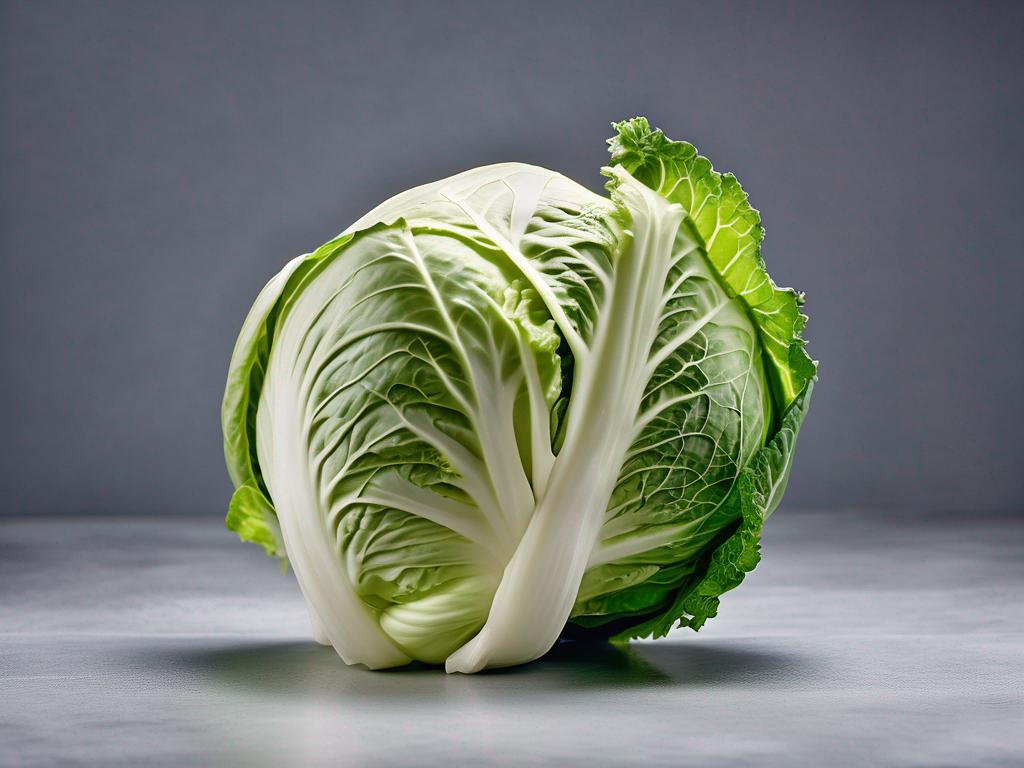
Preserving Common Cabbage in the Fridge for Longer Freshness
Get Your Free Food Safety Cheat Sheet
30 most common foods with instant answers. Print it and stick it on your fridge—completely free!
Preserving Common Cabbage in the Fridge for Longer Freshness
Common cabbage is a versatile and nutritious vegetable that can be a staple in many dishes. Its crunchy texture and mild flavor make it a popular choice for salads, coleslaw, stir-fries, and more. To make the most of your common cabbage and ensure it stays fresh for longer, proper storage is essential. In this guide, we'll explore the best practices for preserving common cabbage in the fridge to maintain its freshness and quality. (Common cabbage)
Why Proper Storage Matters for Common Cabbage
Proper storage of common cabbage is crucial for maintaining its freshness, flavor, and nutritional value. When stored incorrectly, cabbage can wilt, develop off-flavors, or even rot quickly. Here are some reasons why proper storage matters:
Retaining Nutritional Value
- Proper storage helps retain the essential nutrients present in common cabbage, such as vitamin C, vitamin K, and fiber.
- Exposure to light, air, and moisture can lead to nutrient loss over time.
Preventing Spoilage
- Storing cabbage in the fridge at the correct temperature can help prevent premature spoilage and extend its shelf life.
- Proper storage practices can also reduce the risk of mold growth and bacterial contamination.
Maintaining Flavor and Texture
- Freshly harvested cabbage has a crisp texture and a mild, slightly sweet flavor.
- Improper storage can cause cabbage leaves to wilt, become limp, or develop a strong, bitter taste.
Steps to Preserve Common Cabbage in the Fridge
To maximize the shelf life of common cabbage and keep it fresh for an extended period, follow these steps for proper storage:
1. Choose Fresh, Quality Cabbage
- Select cabbage heads that are firm, heavy for their size, and free from blemishes or discoloration.
- Avoid cabbages with wilted or damaged outer leaves, as they may indicate poor quality.
2. Clean and Prepare the Cabbage
- Rinse the cabbage under cold running water to remove any dirt or debris.
- Remove and discard any wilted or damaged outer leaves.
- Cut the cabbage as needed for your recipes, but avoid shredding or slicing the entire head until you're ready to use it.
3. Wrap the Cabbage Properly
- Place the whole cabbage head in a plastic bag or wrap it tightly in plastic wrap.
- Ensure there are no air pockets or openings in the wrapping to prevent moisture loss and exposure to air.
4. Store in the Fridge
- Place the wrapped cabbage in the crisper drawer of your refrigerator.
- Maintain a temperature between 32°F and 40°F (0°C to 4°C) to slow down the cabbage's metabolic processes.
5. Check and Rotate
- Periodically check the cabbage for any signs of spoilage, such as mold, slime, or off odors.
- Rotate the cabbage head if needed to ensure even cooling and air circulation.
6. Use within a Reasonable Timeframe
- While properly stored cabbage can last for up to 2 weeks in the fridge, it's best to use it within 5-7 days for optimal freshness and flavor.
- Cut or cooked cabbage should be consumed within 3-4 days to maintain quality.
Additional Tips for Cabbage Storage
Here are some additional tips to help you preserve common cabbage and reduce food waste:
- Avoid Storing Cut Cabbage at Room Temperature: Once cabbage is cut or shredded, it should be stored in the fridge to prevent bacterial growth and spoilage.
- Use Airtight Containers: If you prefer to store cut cabbage in containers, make sure they are airtight to maintain freshness.
- Don't Wash Cabbage Before Storing: Washing cabbage before storage can promote spoilage. Rinse it just before use instead.
- Consider Freezing Excess Cabbage: If you have more cabbage than you can consume, consider blanching and freezing it for longer-term storage.
Conclusion
By following these simple yet effective tips for preserving common cabbage in the fridge, you can extend its shelf life, maintain its freshness, and enjoy its nutritional benefits for longer. Proper storage practices not only help reduce food waste but also ensure that your dishes are flavorful and packed with essential nutrients. Remember to inspect your cabbage regularly, use it within a reasonable timeframe, and adjust storage methods as needed to keep your cabbage fresh and delicious. [Click here](/food/common cabbage) for more information on common cabbage.
Whether you're adding cabbage to your salads, soups, stews, or stir-fries, keeping it fresh and crisp is key to unlocking its full potential in your culinary creations. Start implementing these storage tips today and make the most of your common cabbage in every meal! (Common cabbage)
Related Posts
Here are some other articles you might find helpful:
Authoritative Food Safety References
These agencies and university labs inform every tip and health precaution we publish.
USDA FoodKeeper – Cold Storage Guidelines
Official refrigerator, freezer, and pantry timelines maintained by the U.S. Department of Agriculture.
Visit USDA FoodKeeperFDA Produce Safety Rule & Grower Guidance
Field-to-fridge handling practices that prevent contamination of fruits, vegetables, and leafy greens.
Visit FDA Produce SafetyCDC Foodborne Illness Prevention Hub
Surveillance-backed guidance on pathogens, symptoms, and steps to reduce foodborne illness risk.
Visit CDC Food SafetyUC Davis Postharvest Technology Center
University research detailing optimal storage atmospheres for produce after harvest.
Visit UC Davis PostharvestPenn State Extension – Home Food Preservation & Safety
Peer-reviewed extension bulletins on safe canning, chilling, and reheating practices.
Visit Penn State ExtensionGet Your Free Food Safety Cheat Sheet
30 most common foods with instant answers. Print it and stick it on your fridge—completely free! Want more? Upgrade to the complete guide with 70+ foods.
Scan your food directly and get instant safety info using our AI-powered camera feature.